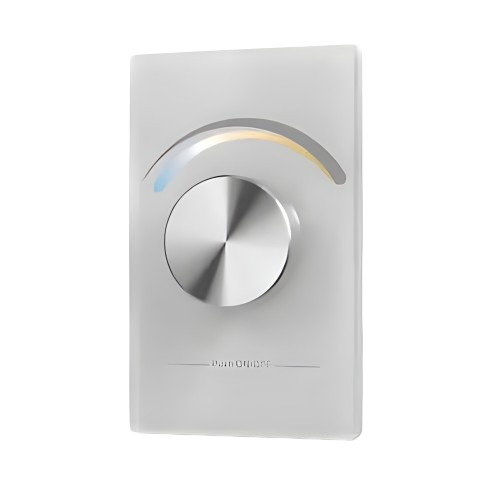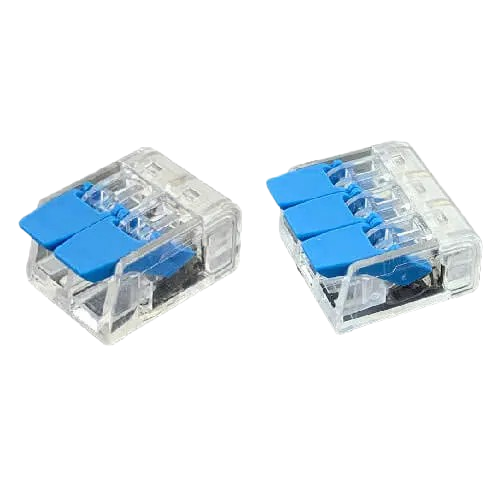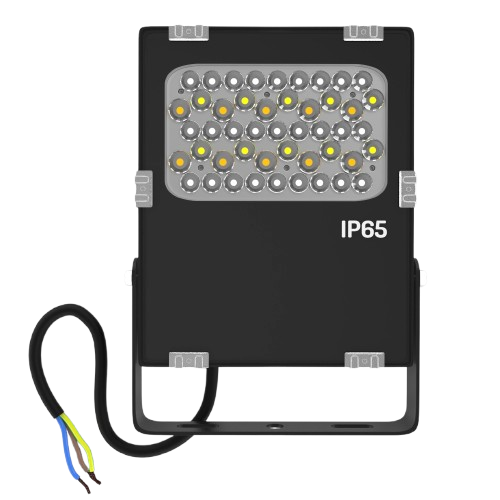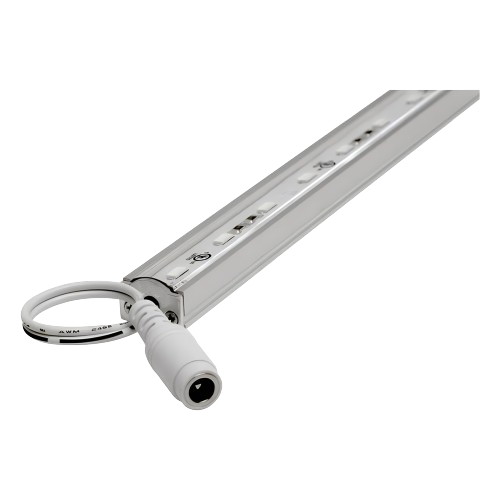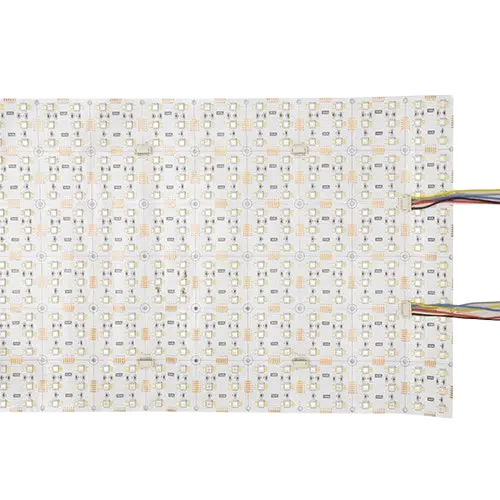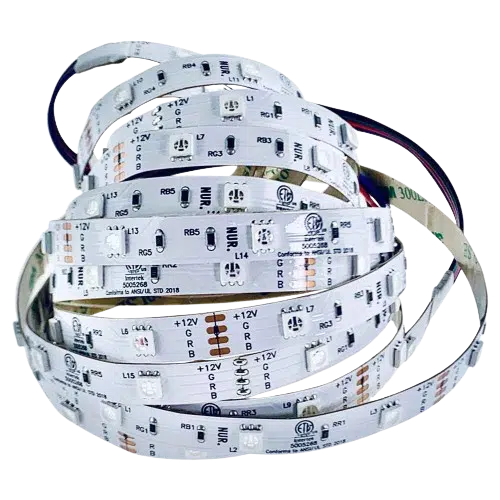HOW TO INSTALL STRIP LIGHTS – PART 1
Components, Plan, and Power
In part 1 of this tutorial, we will cover what are the main components you will need for a strip light system, how you can make a plan for your project, and how you can choose the correct power supply.

HOW TO INSTALL STRIP LIGHTS – PART 1
When you start a new project, it’s good to understand your options.
These are the seven main components you can use in your strip light system. For a single-color system you will always need two components, and for a multicolor system you will need four components.
- Strip Lights > (always needed)
- Power Supply > (always needed)
- Controller (needed for multicolor)
- Remote (needed for multicolor)
- Aluminum Channel >
- Diffusers/Covers
- Connectors

You always need (1) strip lights and a (2) power supply to make a single-color strip light system.
In addition to these two components, for a multicolor system you will also need a (3) controller and a (4) remote.
Optional components are available based on the needs of your project.
(5) Aluminum Channel (also known as Extrusion or Profile) is useful if you need to protect or mount your strip lights. You may also like to use them for visual appeal.
(6) Diffusers (plastic covers) are used to protect your strip lights and to improve their aesthetics.
(7) Connectors are used to make your connections easier without soldering.

- Have a notebook ready to draw or sketch your project area of where you want to install your strip lights. Make notes of the locations you intend to install your lights as well as any corners, gaps, and nearby power outlets that you will need to use.
- Measure each location you’re going to install the strip lights. Add the measurements together to estimate the total amount of feet you’ll need.
- Measure any gaps to calculate how many feet of low voltage wire you will need to make connections.
- Measure distances between your needed power sources and strip lights to calculate how much electrical wires you will need to connect to your power.
- Count how many corners or other connectors you will need to make connections.
SECTION 2 – MEASUREMENTS AND PLANNING
When you start a new project, it’s good to understand your options.
SECTION 3 – POWER SUPPLIES
How to select the correct LED driver (power supply) for your strip light system:
UNDERSTANDING THE VOLTAGE AND WATTAGE OF YOUR STRIP LIGHTS.
- You will be able to choose between 12-volt (12v) or 24-volt (24v) varieties of low voltage strip lights. Select the same voltage for your LED driver.
- Your selected strip light consumes a specific amount of wattage (power). The amount of wattage will vary depending on the brightness and density of the LED strip light. The watts per foot is indicated on the product and product description.
- Calculate how many watts you need by multiplying the length of strip light in feet by how many watts are needed per foot. For example, 10 feet of strip light that requires 4.4 watts per foot will need 44 watts to power the 10 feet of strip lights.

- It is not good to push the limit of your power supply, just as it is not good to drive your car at full throttle, it can wear out the components much faster. It is recommended that you add a 20% buffer to the minimum wattage requirement to extend the lifespan of your LED driver. You can do this by multiplying the minimum wattage requirement by 1.2. For example, if the minimum requirement is 44 then multiply 44 x 1.2 which equals 52.8. You should use an LED driver above 52.8 watts.
- You will be able to choose between a variety of wattage options for your LED driver, such as 5W, 25W, 30W, etc.
UNDERSTANDING DIMMING
- If you plan to dim your strip lights through a conventional dimming switch, make sure to get a dimmable LED driver, these will dim with high voltage 110v controllers.
- You can also dim with a 0-10v dimming system. This is usually the case with multicolor or smart controllers. These LED drivers will be described as 0-10v dimming.

Now that you have finished part 1 of How to Install Strip Lights you understand the main components of a strip light system, can plan out what you will need for your project, and can choose the correct LED driver for your strip lights.
Thank you for reading our articles. Find related products in our Strip Lights category page here.












